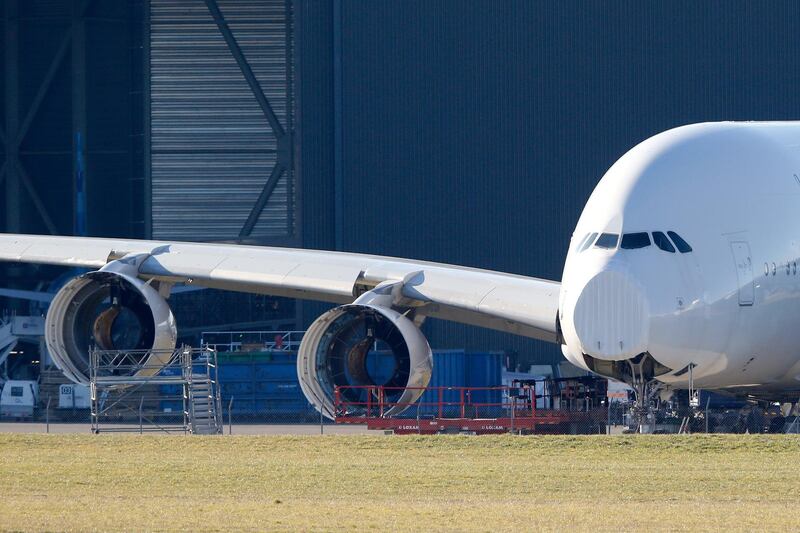Emirates, the biggest customer of the Airbus A380, said this month it has started to strip down its first retired four-engined mammoth aircraft, saving it from the fate of spending the rest of its days in a landfill.
Other carriers such as Singapore Airlines have already started recycling their A380 jets, ushering in an era of smaller and leaner models. More than 80 per cent of the world's A380 fleet is currently in storage, with many destined for early retirement, according to Ascend by Cirium, which provides data analytics to the industry.
Long-haul travel remains restricted by travel and quarantine restrictions due to the Covid-19 pandemic, meaning demand for the highest capacity twin-aisle jets is comparatively low, according to Cirium.
Here is what the recycling process of an A380 superjumbo entails.
Just how big is the A380?
The Airbus A380 is one of the most popular jets with customers. The double-decker reached the end of the runway when Airbus decided to halt production of the jet in 2019 after 12 years in service because of weak demand. However, its top customer Emirates has made efficient use of it and operates the world's biggest fleet of A380s.
The behemoth aircraft has a range of 8,000 nautical miles, or 15,000 kilometres. The giant of the skies weighs between 510 and 575 tonnes, is as long as two blue whales and as tall as five giraffes.
What is the process behind recycling this behemoth?
First, the aircraft owner will remove all of the jet's valuable parts which include the engines, avionics, landing gear, seats, flaps and auxiliary power units (APUs) that are kept for future use, said Sven Daniel Koechler, founder of UAE-based Aircraft Solutions Middle East.
The interiors are removed during the dismantling. Then workers begin to strip the remaining parts on the inside (particularly the walls), cut off the wings and cut up the fuselage or the body of the aircraft.
The engines may be split into modules or stripped down to get specific life-limited parts (LLPs) or high-value components that are repairable such as blades and vanes, Richard Evans, senior consultant at Ascend by Cirium, said.
“There are likely to be quite a number of other components that could be re-used to keep other aircraft maintained but a large part of the actual structure of the aircraft (wings, fuselage, et cetera) will ultimately be reduced to scrap metal,” Mr Evans said.
The process of stripping down an A380 will be no different to a smaller airliner such as the A330 or A340, he said.
How long does it take?
The process could take about three months, with 40 employees working two shifts, Mr Koechler estimates.
How many parts are 'harvested' from this process?
Any materials that are not harvested for reuse as spare parts could still be recycled as the material is scrapped, according to Mr Evans.
“We don’t have the numbers specifically but it’s likely that more than 90 per cent by weight of the aircraft will be repurposed in one form or another,” he said.
UAE-based Falcon Aircraft Recycling, which has been contracted for the Emirates A380 recycling job, said that approximately190 tonnes of various metals, plastics, carbon fibre composites and other materials will be removed from the aircraft and passed on for recycling or repurposing through its upcycling programme. Upcycling plane parts means using old materials to make a new and different product.
What are the challenges of recycling an A380?
Many aircraft items can be difficult and expensive to recycle or dispose of, such as fire-retardant fabrics and composite materials.
Emirates said it will transform its on-board bar and other cabin features into furniture, aviation memorabilia and retail items for sale, with a portion of sale profits to go to its charity arm the Emirates Airline Foundation.
There is also a very small secondary market for A380 components, while third-party buyers of spares will be few and far between.
“The market for the A380 parts will be very limited at present and for the foreseeable future,” Mr Evans said.
Emirates said its retired A380 was brought to the airline’s Engineering Centre, where its engineers retrieved serviceable components such as engines, landing gear and flight control components.






